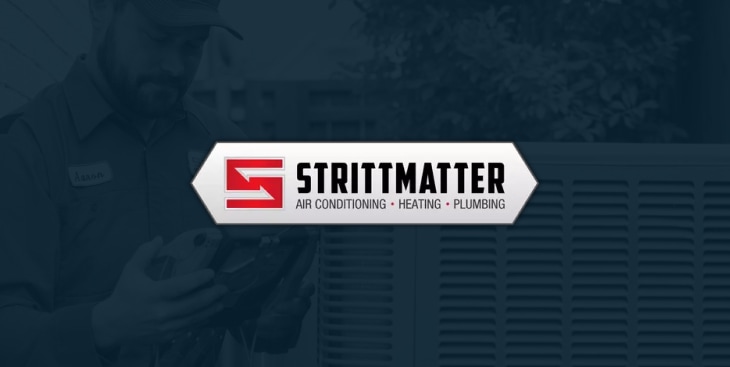Furnace Maintenance Checklist: 7 Furnace Maintenance Tips
The best way to keep your family safe and warm this winter is to schedule professional furnace maintenance. A well-maintained furnace can run at optimal efficiency, saving you money on your energy bills and making your home more comfortable. Professional maintenance can identify and fix issues causing your furnace to work harder than it needs to. Scheduling regular furnace maintenance with a professional and performing routine checks can ensure your furnace’s safety, efficiency, and longevity, resulting in a more comfortable and healthy living environment and saving you money on costly repairs or replacements. Below is a furnace maintenance checklist to keep your system running smoothly.
1. Change the Air Filter
By changing the air filter on your furnace regularly, you can help to improve the efficiency and effectiveness of the system, extend the life of the furnace, and improve the air quality in your home. A clean air filter allows air to flow freely through the furnace, which can improve the efficiency and effectiveness of the system. A clogged or dirty air filter can restrict airflow, which can cause the furnace to work harder and use more energy to heat your home. A dirty air filter can cause the furnace to overheat, leading to damage and wear on the system over time. By changing the air filter regularly, you can help to protect the furnace from damage and extend its life.
2. Keep the Area Around the Furnace Clean
Keeping the area around your furnace clean ensures that it operates safely and efficiently. Some things to keep in mind when cleaning the area around the furnace include the following:
- Clear the area around the furnace of any debris or clutter.
- Keep flammable materials such as gasoline, cleaning solvents, or paint away from the furnace.
- Check for any signs of water damage or leaks around the furnace.
- Clean or vacuum the registers and grills to remove dust and dirt.
- Make sure there is enough clear space around the furnace to allow proper ventilation.
- Regularly check for any signs of pests or rodents and take action to remove them if needed.
3. Schedule Professional Furnace Maintenance
Scheduling seasonal furnace maintenance once a year, before the start of the heating season, is highly recommended. If you notice any unusual noises, smells, or problems with your furnace, it’s best to schedule service immediately. A qualified technician can check for potential hazards, such as carbon monoxide leaks, and ensure that the furnace’s safety controls are functioning properly. Basic furnace maintenance can increase your furnace’s efficiency, lowering energy bills and making your home more comfortable. It can save you from costly repairs down the road or even replacement of the unit. Some manufacturers require regular maintenance to keep the warranty valid.
4. Keep Vents and Air Ducts Clear of Obstructions
Check the vents and air ducts for blockages such as furniture, curtains, or rugs blocking the airflow. Keep the air ducts and vents free of dust, cobwebs, and debris. By keeping the vents and air ducts of your furnace clear of obstructions, you can ensure that the furnace has adequate airflow, which is essential for safe and efficient operation. Clean air ducts also improve the air quality in your home, making it more comfortable for you and your family.
5. Make Sure the Thermostat Is Calibrated and Working Properly
Ensuring that your thermostat is calibrated and working properly helps your system operate more efficiently. Here are some things to keep in mind:
- Check the thermostat’s calibration by comparing its temperature with the room’s temperature.
- If your thermostat is battery-operated, check the batteries and replace them as needed.
- Inspect the thermostat’s wiring to ensure that it is securely connected and not damaged.
- Ensure the thermostat is set to the correct temperature and mode for your comfort and energy savings.
- Test the thermostat by turning the temperature up and ensuring the furnace response.
Pay attention to the performance of your HVAC system; if it doesn’t seem to be heating your home efficiently or cycles on and off frequently, you may have a problem with your thermostat.
6. Inspect the Pilot Light
The pilot light is a small flame that burns constantly, used to ignite the burners on a furnace when the thermostat calls for heat. Inspecting the pilot light is important in maintaining your furnace and ensuring that it operates safely and efficiently. Visually inspect the pilot light to ensure it is burning steadily, blue in color, and the flame does not appear too high, low, or yellow. Check for any debris or dust build-up around the pilot light, and clean it as necessary. Check the pilot light’s adjustment screw or valve to ensure it’s adjusted correctly. It can be adjusted if the flame is too high or too low. If you are uncomfortable performing this task, it’s best to consult the furnace’s manual or hire a professional to inspect the pilot light and help with any adjustments.
7. Check and Tighten Loose Furnace Connections
Locate the main gas shut-off valve near the furnace, and turn off the gas supply before inspecting the furnace’s connections. Look for loose or corroded connections on the furnace, such as the gas supply line, the burner assembly, and the vent pipe. Tighten loose connections with a pipe wrench or pliers, being careful not to overtighten or damage the pipes or fittings. Inspect the gas supply line for any leaks or damage. If you notice any leaks or damage, it is best to call a professional to make the necessary repairs. After tightening the connections, turn the gas supply back on and test the furnace for proper operation.
Schedule Furnace Maintenance in Texas
Keep your family safe and warm this winter with proper furnace care from Strittmatter Plumbing, Heating, and AC. We offer annual furnace maintenance in Texas. Contact us today to schedule an in-home assessment of your heating system.





